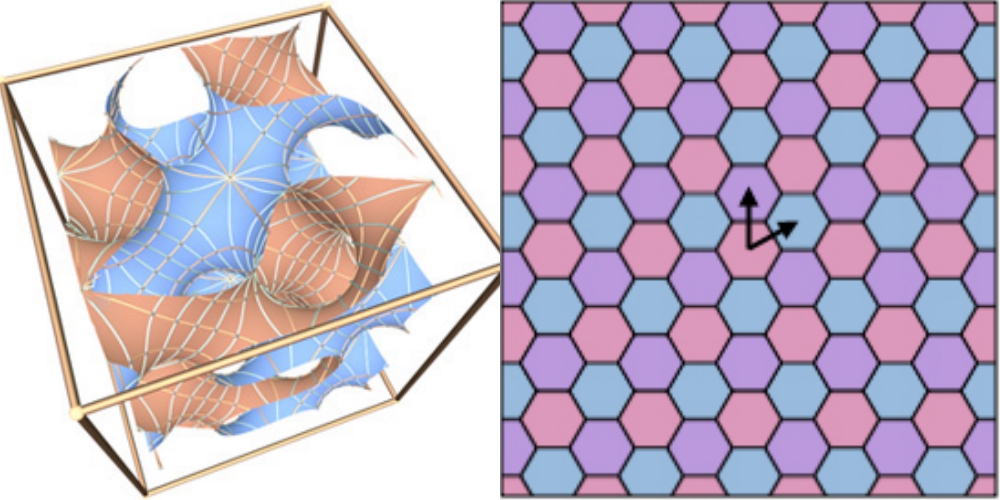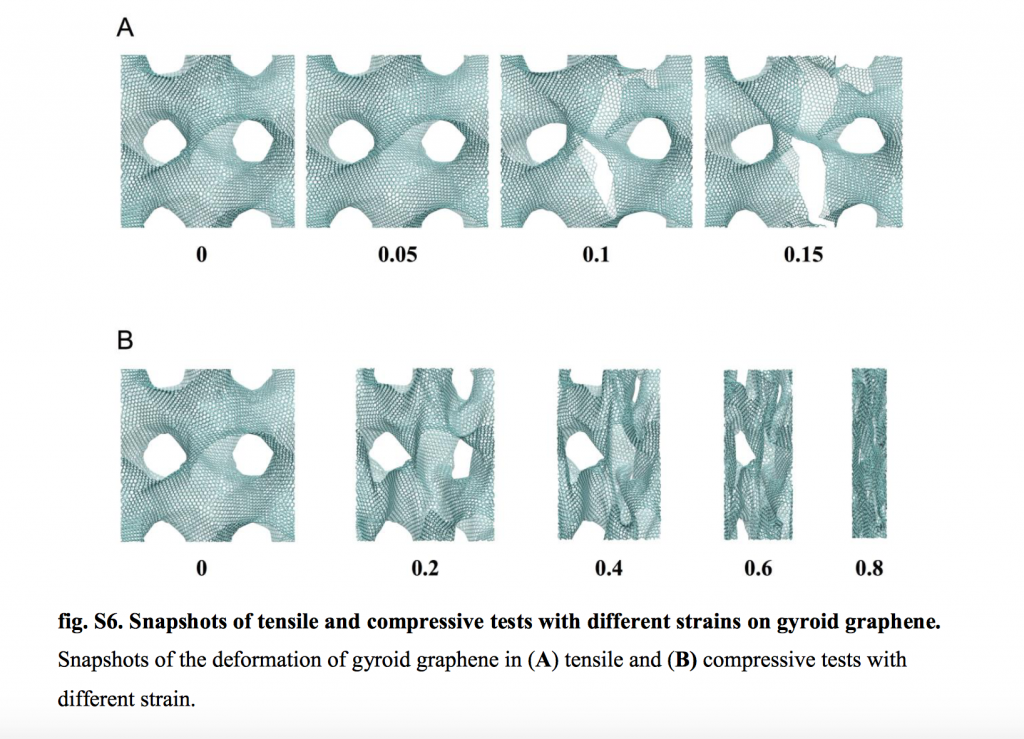Through studying the geometry of strong structures, MIT researchers are now one step closer to 3D printing graphene. By comparison, 2D graphene is better at conducting electricity than copper wires, ten times stronger than steel, and lighter and certainly more transparent than both of them. The problem is that these properties as are all theoretical and scaling the nanomaterial has proved challenging. Furthermore, in order to compete with copper and steel, graphene has to be 3D.
3D graphene – here’s the deal
The challenges of making a 3D structure out of a 2D material is that the material’s atomic structure, the source of all its power, is changed through production methods, i.e. melting and cooling in 3D printing. Currently, graphene is used to strengthen other materials such as TPU or PLA.
MIT’s most recent research into The mechanics and design of a lightweight three-dimensional graphene assembly puts forward a possible geometric structure for graphene, providing its atomic structure prints unchanged. The geometry takes the form of gyroid, a shape first discovered by mathematician Alan Schoen in 1970.
Geometry is key
Gyroids are similar to the honeycomb structure of graphene itself in that their entire lattice can be created from just one segment of it, i.e. all you need to recreate a graphene lattice, is one hexagon.

Gyoroids are also characterised by their minimal surface, meaning that it takes on the form of ‘the least amount of area needed to occupy space’. This lends the shape to 3D printing as it means that it requires less material to make a shape of a particular volume cutting out waste and also weight, which is one of the main reasons for studying graphene’s 3D possibilities.
Tensile and compression tests
MIT 3D printed five gyroids with varying wall thickness. They were made in Stratasys’ VeroMagenta plastic on an Object500, at a resolution of 20 μm (microns or micromemters, a single unit being one thousandth of a millimetre), and then each tested for tensile (stretched) and compressive (squashed) strength.
Comparative compression tests of a gyroid with thin walls (left) and thicker walls (right). Clip via: Massachusetts Institute of Technology (MIT) on YouTube
Results showed that gyroids with thicker walls behaved differently under pressure in comparison to thinner counterparts – the thin structures crumble gradually, whereas thick walls absorb the pressure and release it in an explosion.
The result of these tests enabled the researchers to digitally simulate how a gyroid made from graphene would perform under such stresses, as explained by lead author Markus Buehler, “You can replace the material itself with anything. The geometry is the dominant factor. It’s something that has the potential to transfer to many things.”

The simulations outline the potential limits of 3D graphene, establishing the “critical densities below which the 3D graphene assembly starts to lose its mechanical advantage over most polymeric cellular materials”. Though it still isn’t quite the 3D printed realisation we were hoping for, theory is of course the necessary informant of practice. 3DPI are looking forward to seeing the eventual result of such research – a 3D printed material stronger than an other in the world.
If you’d like to stay up to date on topics such as 3D printed graphene, you can sign up to the 3D Printing Industry newsletter here for a regular digest straight to your email inbox.
Featured image shows a 3D printed gyroid used to realise a theoretical structure for 3D graphene. Photo by Mealnie Gonick for MIT.



